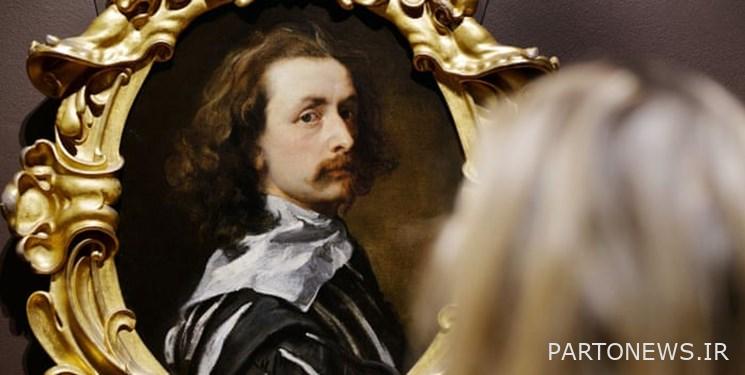The secret of multi-dollar painting that became several million dollars!

According to the visual correspondent of Fars News Agency, quoted by Guardian, An art historian discovered that the پ 65 painting on the wall was by the great Flemish painter Anthony Van Dyke.
According to Cortald, the image of Isabella Clara Eugenia, the Spanish Infanta, is probably the work of Sir Anthony Van Dyke.
As a leading art historian, Christopher Wright has discovered several old paintings by great painters in public and private collections over five decades. Now he’s a copy of a painting by Sir Anthony van Dyke, which he bought for ۶ 65 in 1970, is in fact a masterpiece donated by the great seventeenth-century Flemish court painter to King Charles I.
“I bought it from a seller in west London,” he said. As an art historian, I bought it as a copy. It is strange that I did not pay attention to it at all. Wright estimates the painting is worth around ۰۰ 40,000, while some of Van Dyke’s works sell for seven figures.
This painting, a portrait of Isabella Clara Eugenia, the Spanish Infanta and the Spanish Spanish Viceroy, has hung in her living room for years. Now that he understands its importance, he wants to make it public. He lends it permanently to the Canon Hall Barnsley Museum, which houses a collection of beautiful seventeenth-century Dutch and Flemish paintings.
Wright’s previous discoveries include a portrait of Stubbs at the Frances Hall Art Gallery, and his books include studies of seventeenth-century artists such as Rembrandt.

“I really think this is your painting by Van Dyke,” said Colin Harrison, a senior European art expert at the Ashmoulin Museum in Oxford, as he glanced closer to his portrait. It was then taken to the Cortold Institute of Art in central London, where it was examined and reconstructed.
When Wright bought it, he thought it was one of several copies of Van Dyke’s Infantry portraits. This painting is oil on canvas with dimensions of 81.5 by 70.5 cm.
In this painting, she appears as a nun, and depicts her mourning and piety after the death of her husband, Archduke Albert VII of Austria, in 1621. He became Viceroy of the Netherlands and ruled alone until his death in 1633.
It is believed that the date of creation of this work is between 1628 and 1632. Van Dyke worked for King James I in England until that time as a court painter for Infanta, and returned to England in 1632, where Charles I appointed him “Princely Painter” and knighted him. .
Sir Anthony van Dyke (March 22, 1599 – December 9, 1641) was a Belgian painter and one of the best portrait painters of the 17th century. In 1632 he became the official painter of the court of Charles I of England and Scotland.
He rose to fame, and his style of painting became the dominant style of English portrait painting over the next 150 years. In addition to painting portraits, Van Dijk was skilled in drawing mythological subjects and biblical themes, as well as in design. He is also considered one of the most important innovators in watercolor painting and engraving.
Van Dyke Coffee or Kassel Coffee was introduced and used by Van Dyke in the 17th century. Van Dyke coffee is a poisonous soil pigment in garlic chocolate color (darker than burnt amber) with a green undertone and is prepared with this mixture. Made in color. Thus, the former contains Fe203, the latter contains F203 and Mn02, and the third contains hydroxide-hydrous iron oxide_ FeH-OH nH20; So all three are silicates. (Because the clays are all silicates.) But the ferrous silicates that are placed between the irons, amber contains manganese.
End of message /
You can edit this post
Suggest this for the front page
.

